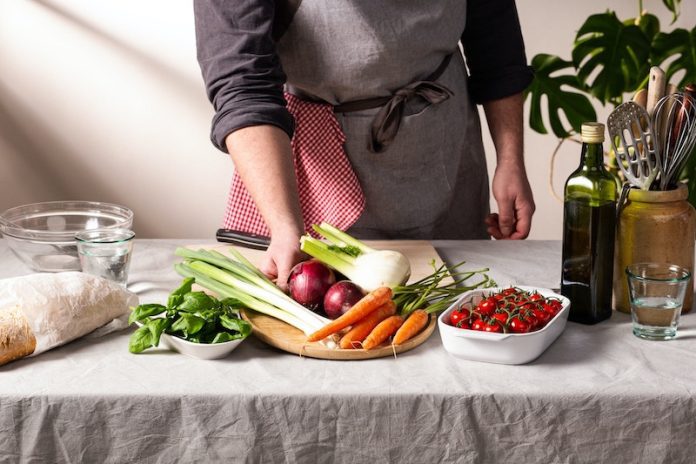
DASH is short for “Dietary Approaches to Stop Hypertension”. It’s a simple, flexible plan to help you lower your blood pressure.
The key? Eat more of some foods and less of others.
Foods to Eat More Of
The DASH diet is like a friend who encourages you to eat more fruits, vegetables, whole grains, lean proteins, and low-fat dairy products.
These foods are low in unhealthy fats and cholesterol but rich in fiber, protein, and important minerals.
Foods to Eat Less Of
This diet also wants you to eat less sodium (salt), sweets, sugary drinks, and red meats. These foods can raise your blood pressure.
Research Evidence: Does the DASH Diet Work?
Yes, it does! The National Heart, Lung, and Blood Institute in the U.S. funded research that tested this diet.
The results?
People who followed the DASH diet lowered their blood pressure within two weeks.
Benefits Beyond Lowering Blood Pressure
The DASH diet isn’t just for high blood pressure. It also helps reduce the risk of heart disease, stroke, diabetes, and some cancers.
A Typical Day on the DASH Diet
Here’s an idea of what you might eat in a day:
- Breakfast: Whole grain cereal with low-fat milk and a banana.
- Lunch: A salad with lean chicken, lots of veggies, and a vinaigrette dressing.
- Snack: A handful of almonds.
- Dinner: Grilled fish, steamed broccoli, brown rice, and an apple for dessert.
It’s not too different from what you might eat normally, right?
Tips for Starting the DASH Diet
Here are some helpful steps to get you started:
Step 1: Check Your Portions
Eating too much of any food can lead to weight gain. Watch your portion sizes, even with healthy foods.
Step 2: Add More Fruits and Vegetables
Try adding one extra fruit or vegetable to each meal. Fresh, frozen, or canned (without added sugar or salt) are all good choices.
Step 3: Choose Whole Grains
Whole grains, like brown rice and whole wheat bread, are healthier than refined grains, like white rice and white bread. They have more fiber, which can help you feel full.
Step 4: Pick Lean Proteins
Fish, chicken, and beans are better choices than fatty cuts of meat. Try having meatless meals a few times a week.
Step 5: Limit Sodium
Too much sodium can raise your blood pressure. Cook at home more often, where you can control the amount of salt in your food. Limit processed foods, which often have a lot of added sodium.
Be Patient with Yourself
Changing your diet takes time. It’s okay to start small and make changes slowly. Even small changes can make a big difference for your health.
Remember, eating should be a joy, not a chore. So, find healthy foods you love, and enjoy the journey to lower blood pressure.
If you care about blood pressure, please read studies about unhealthy habits that could increase high blood pressure risk, and people with severe high blood pressure should reduce coffee intake.
For more information about blood pressure, please see recent studies that early time-restricted eating could help improve blood pressure, and results showing plant-based foods could benefit people with high blood pressure.
Copyright © 2023 Scientific Diet. All rights reserved.








